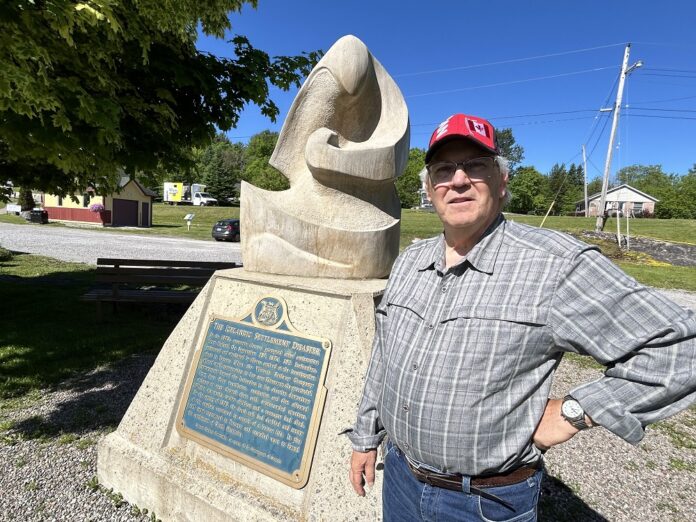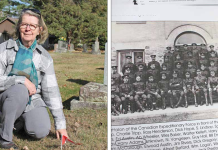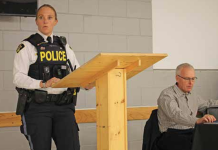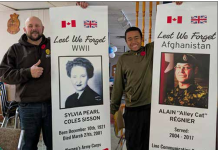Kinmount will have more of a Nordic feel this weekend as relatives of early Icelandic settlers prepare to descend on the community – 150 years on from their ancestors’ arrival.
The Icelandic Canadian Club of Toronto is partnering with the Kinmount Artisans Marketplace and local historian Guy Scott to host an Icelandic National Day picnic. The event is expected to draw about 50 visitors from Ottawa and the GTA, who will learn firsthand about the struggles Icelandic nationals faced when they moved to the area in the 1870s.
Don Gislason, a member of the Toronto club, has documented the journey in his book The Icelanders of Kinmount: An experiment in settlement. He said a large group of Icelanders arrived in Kinmount in September 1874, having been sent to work on the Victoria railway line.
It was a brutal experience, Gislason told The Highlander. The immigrants lived in shanties along the Burnt River and suffered through a bitter winter, which saw 38 of them, mostly young children, die due to bad health and disease.
When one of the railway companies offering employment went belly-up, many of the Icelanders found themselves out of a job. With few other job opportunities, the immigrants left, never to return. Many moved to Manitoba, establishing Gimli – which translates to ‘heaven’ in old Norse.
Gwen Sigrid Morgan, president of the Toronto club, said she learned about Icelandic history in Kinmount in the 1980s, after Scott published his book History of Kinmount: A community on the fringe.
She said the immigrants’ story, while rooted in sadness, is also a great demonstration of grit and perseverance.
“People in the past met hardship with resilience. They’ve risen above it. These are the stories that empower us today,” Morgan said. “We want to draw on those stories. There’s a phrase in Iceland – Þetta reddast – that means ‘we can endure, we will endure, we will hold steadfast, this will not break us’. Despite the hardship and the loss, they landed again in Manitoba and created a new life.”
It will be the group’s second visit to the community since the pandemic. They will gather beside the Kinmount Heritage Museum, beside the memorial installed by Gudrun Sigursteinsdöttir Girgis, installed in the settlers’ honour in 2000.
Scott said the community is ready for the Icelanders’ arrival June 15 – there will be a special exhibition debuting at the museum, focusing on the early settlement of the community, from 9 a.m. to 4 p.m., and a craft show put on by the Kinmount Artisans Marketplace, from 9 a.m. to 5 p.m. Attendees will be invited to participate in a walk along the rail trail to the trestle bridge at noon – which is where Scott believes the lost Icelander village of Hayford was located.
Scott will then lead a guided tour of the community, starting at 3 p.m., concluding with a visit to what remains of an old village the Icelanders built near Furnace Falls.
The local historian said it will be like winding the clock back 150 years, with a Scott guiding Icelandic visitors in Kinmount.
“My great, great uncle was hired by the railroad company back in the day to pick the Icelanders up from Coboconk and bring them to Kinmount – my great aunt used to say he always told stories about how positive these people were,” Scott said. “I love history, and I think it’s important we keep these stories alive because it’s a major part of how our community came to be.”





